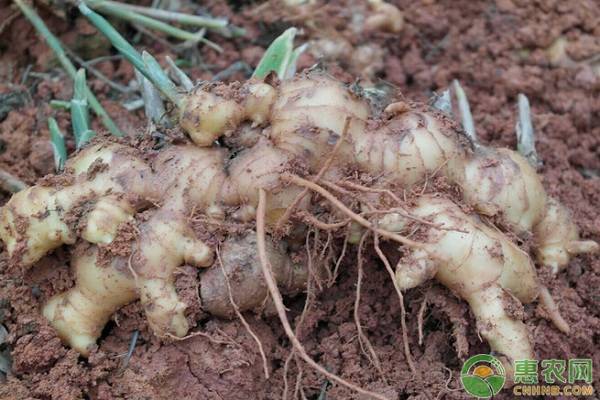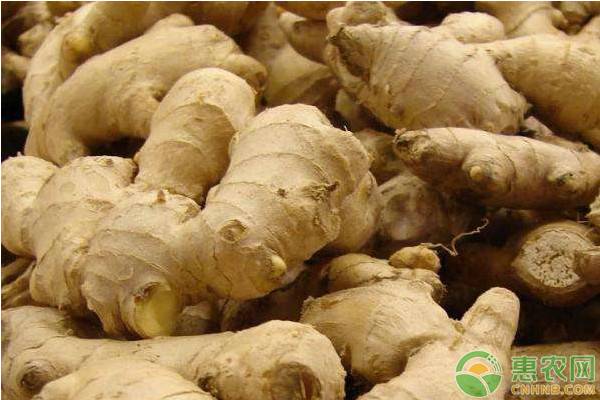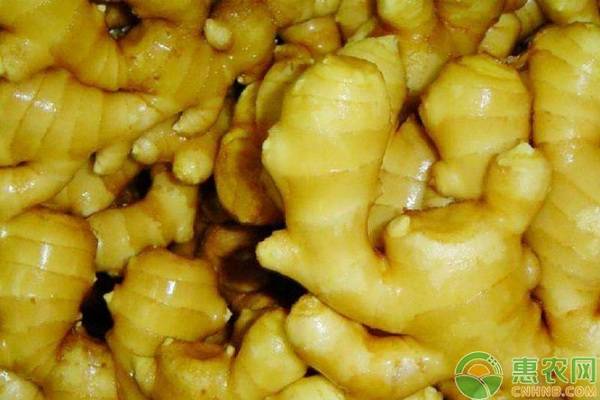Ginger high-yield planting techniques
What kind of place does ginger need to pay attention to when it wants high yield? Ginger is one of the important side dishes in people's lives. The market demand is particularly large, and there are many major ginger producing areas in China. Here we talk about the high-yield planting points of ginger. 1. Environmental requirements Ginger is warm, and the environment of about 25 degrees is more suitable for ginger growth. At the same time, ginger is not resistant to high temperatures. If the light is too strong, it is necessary to build a shade net in time. Ginger roots are shallow and thin, and irrigation is not recommended. 2. Soil preparation and fertilization Planting soil is recommended to be fertile and soft, convenient for irrigation and drainage, and then the land is deeply ploughed, about 30 cm, after which the soil is filled with fully decomposed organic fertilizer, and a small amount of superphosphate, and then stacked into a 20 cm 畦. Then, a groove of about 10 cm is opened on the surface of the crucible, and it can be planted. 3. Germination treatment After cleaning the ginger, dry it in a place outside. Pay attention to the fact that it should not be exposed to strong light or direct sunlight. Let it dry naturally. Dry for about two days, then put the ginger in the cool environment of the environment, and then screen the variety, filter the ginger with softer meat and less pure color, choose the brighter color, grow stronger, feel the harder ginger. As a base for planting, the screened ginger is then germinated under an environment of about 25 degrees. About 20 days or so, white buds grow and then covered with a layer of hay for preservation. 4. Water and fertilizer management After the ginger is germinated, watering should be carried out once, but depending on the soil condition, the soil moisture is generally maintained at about 70%, and the summer watering date is preferably selected in the morning or evening, in addition to the seedling stage and growth. Watering should also be done once. When the seedling grows to about 30 cm, a high-nitrogen compound fertilizer can be used for the application of a fertilizer. 5. Pest control The main disease is ginger rickets, which is generally prone to illness in July. It is prone to occur due to high temperatures and rain. Therefore, it is necessary to remove unhealthy and sick plants in time, and the surrounding soil will carry the germs together and then sterilize them with lime. It can be sterilized by spraying carbendazim or spraying on the ammonium. Reduce the incidence of disease. 6. Harvest The picking of ginger can be divided into three periods: tender ginger, ginger and ginger. The tender ginger is mainly picked in August. The ginger is in October, and the ginger is usually grown on the top of the ginger with 5 leaves. Usually around June. The above is the key point of ginger planting, and farmers with better experience can continue to supplement and share. For the wonderful pictures and hot comments about ginger planting technology, you may be interested in the following recommended contents of Hui Nong. Welcome to read. Vitamins are a kind of trace organic substances that humans and animals must obtain from food in order to maintain normal physiological functions. They play an important role in the growth, metabolism, and development of the human body. In the body, this kind of substance can neither be a raw material for body tissue nor a source of energy, but a kind of regulating substance, which plays an important role in material metabolism. Vitamin C,vitamin b3,vitamin raw material Xi'an Natural Field Bio-Technique Co., Ltd. , https://www.naturalnf.com


From the point of view of chemical structure, various vitamins are very different or even unrelated. Therefore, vitamins are usually classified according to their physical properties. They can be divided into fat-soluble vitamins (such as vitamin A, D, E, K, etc.) and water-soluble vitamins ( Such as vitamin C, vitamin B1, B2, B6, B12, pantothenic acid, PP, biotin, folic acid, choline, etc.). Water-soluble vitamins are easily soluble in water but not soluble in organic solvents. They are stored in the body after absorption. Excessive amounts are mostly eliminated in the urine; fat-soluble vitamins are easily soluble in organic solvents but not in water. They can be absorbed by the body with fat and stored in the body, and the excretion rate is not high.
From the perspective of obtaining methods, vitamins can be divided into natural products and chemical synthetic products. Because natural vitamins are limited by raw materials and extraction technology, their yields are low, and their prices are high. Therefore, chemical synthesis takes the lead, accounting for about 80% of the total vitamin output. Among the various segments of the vitamin industry, vitamin B, vitamin E, vitamin C and vitamin A have the largest market shares, 33%, 30%, 21% and 13% respectively. Other vitamins have a smaller market share, accounting for only 3%.
